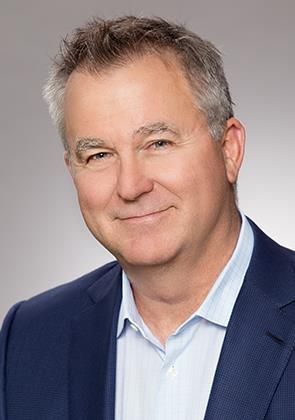How One Health Plan Is Successfully Addressing SDOH
The tools and processes one of the largest not-for-profit Medicare Advantage plans uses to help seniors.

Chris Wing

The term social determinants of health (SDOH) has taken over healthcare in the last few years. And with good reason-studies say that only around 10% of a person’s overall health is influenced directly by healthcare, where social, environmental, genetic, and behavioral patterns determine much of the rest.
In the pursuit of lowering costs and increasing value, payers and providers are increasingly turning to those social and environmental factors.
Related article: 4 Ways Health Plans and Communities Can Address SDOH
One example of that is the Long Beach, California-based SCAN Health Plan, one of the largest not-for-profit Medicare Advantage (MA) plans in the country. Managed Healthcare Executive(MHE) spoke with CEO Chris Wing about why SDOH matter so much, and how SCAN has seen success in addressing these factors.
MHE: Why are you so passionate about SDOH?
Wing: In my case, my father spent his last years of life in a nursing home. There was no independence, no dignity. Not many of us want to be in a nursing home, but have no other way to get the necessary support that facilities provide. When we address the social factors of health-transportation, meals, and personal care-we’re enabling people to retain their independence and age where they want safely and with dignity. I can’t think of a nobler goal.
MHE: How is SCAN involved in addressing SDOH?
Wing: SCAN Health Plan is intently focused on keeping seniors top of mind. One of SCAN’s first programs was the Social HMO federal demonstration, which provided for the in-home support that enables seniors to age safely at home.
Our members are at the center of our model of care. We have long conducted health-risk assessments (HRAs) for members of our Special Needs Plans and last year rolled out HRAs for all our members. In addition to assessing their physical health and functional status, behavioral and cognitive health, and self-efficacy, we also evaluate their social support system including caregiver or family support, and access to housing, nutrition, and transportation. From there, we can better determine health risks and design an individualized plan to mitigate those risk factors and fill unmet needs through benefits, programs and services, or referral to community resources.
SCAN has provided transportation, hearing benefits, and home and community-based care as part of our benefit packages since our days as a Social HMO. Since then, however, the Medicare rules have not always allowed health plans to offer these benefits to all members (most being reserved for those dually enrolled in Medicaid and Medicare). We are also acutely aware that seniors are more heavily impacted by SDOH issues like social isolation and transportation as well, which are vital to acknowledge and address.
I’m focused on ensuring SCAN understands the issues our members face and then addresses those issues holistically through our benefit plans and community services. That includes:
- Working with providers to improve access to care
- Providing transportation benefits so members can keep their appointments and pick up their medications
- Deploying specialized in-home care management programs for the highest need members
- Training our providers and their office staff on geriatric-specific strategies such as fall prevention, and then incentivizing them to manage fall risks
- Employing SCAN members to call their fellow members who have indicated they need help with issues like bladder leakage, depression and pain
- Helping members access community resources
MHE: Where is healthcare overall in addressing SDOH today, on a scale from 1-10, 10 being the highest?
Wing: Right now, I would say the industry is at a 6 out of 10. There is still a lot of room to grow as far as understanding the services needed to ensure seniors dealing with SDOH are properly cared for. Presently, policy shifts are allowing Medicare Advantage organizations to include benefits that address social needs, as well as creating payment models that make the business case for tackling SDOH on a broader front.
With the healthcare industry placing renewed emphasis on SDOH, it is allowing for more creative collaboration between plans, physicians, community-based organizations and even non-traditional health organizations as we seek new and better ways to address these issues.
MHE: What are some success stories you’ve heard?
Wing: One of our members is an 87-year-old woman whose primary language is Japanese. The member, who I’ll call Ms. T, lives alone in her rented apartment in Los Angeles with no family in the U.S. She suffers from pain and has a number of health issues, including severe chronic obstructive pulmonary disorder (COPD). Ms. T was referred to SCAN’s Complex Care Management team after a hospitalization for a pulmonary nodular amyloidosis (PNA), and we were able to connect her with a Japanese-speaking SCAN care manager.
Ms. T was worried about her inability to pay her hospital bill, on top of personal expenses incurred from a gambling addiction. She was so down that she actually told her SCAN care manager: “I just want to quit. I have nothing. I have no one. I can’t keep going like this.”
The care manager helped her make a payment plan with the hospital so that she could afford to pay her copay. With that taken care of, she was more open to managing her health.
Related article: Three Ways to Better Address Social Determinants of Health
Because she is very hard of hearing, we arranged for a home visit from SCAN’s Connecting Provider to Home (CP2H). The CP2H team does in-home assessments and works with the member’s doctors to ensure the doctors understand any challenges the member might be facing in following her treatment plan-and also helps the member to comply by addressing any barriers. The CP2H team developed rapport with Ms. T quickly. She allowed them to facilitate appointments and ensure that she would have transportation and an interpreter for her primary care, pulmonology and oncology appointments, as well as necessary tests and screenings such as bone density and mammogram.
Since CP2H services occurred in her home, we were able to help Ms. T access long-term services and support through her Connections at Home benefit. Connections at Home is a Special Needs Plan for those who qualify for both Medi-Cal and Medicare and meet the definition of needing nursing home level of care. Like all Connections members, Ms. T also has a “SCAN PAL” who answers questions and generally helps her navigate her benefits. While Ms. T declined some of the help offered, she was willing to accept homemaking services once a week. In addition to cleaning and cooking, her caregiver is present so that she is less lonely and isolated.
MHE: What are the biggest barriers to health organizations addressing SDOH?
Wing: Funding is a huge barrier that we have to overcome. There is a lack of appropriate financial incentives for plans and providers tackling SDOH. There also isn’t a sustainable financial model to pay for SDOH, and the healthcare industry doesn’t understand the inherent risks well enough to target SDOH interventions efficiently.
Beyond that, all those in the healthcare delivery system need to play a role in tackling SDOH. For our part, we believe health plans that see their role as stopping at the clinic or hospital door and not going out of that door into the member’s home and into the community, are not meeting the member where he or she is at and not meeting the member’s needs. Our definition of what a health plan does has to evolve for our members’ sake and for providers’ sake as well. What can we take off the provider’s plate so they can focus on care?
MHE: Where will healthcare be in 5, 10, 15 years?
Wing: In the coming years, we should see SDOH included as a standard factor when determining every senior’s health status. Insurance plans and providers will take a more holistic approach to health, one which will include caregivers.
At a national level, we hope the outlook toward Medicare Advantage plans remains as positive as it has been in recent years. We appreciate that CMS has allowed more flexibility in MA plans and in-home benefits; all of which give seniors the opportunity to age where they want to most: in their homes.
Chris Wing is the CEO of SCAN Health Plan, working directly with SCAN’s board of directors, leadership team and employees to develop innovative ways to advance the company’s mission on an individual and community level. As a healthcare management veteran with more than 30 years of experience, Wing has served as a top executive at Health Net, PacifiCare of California, Blue Cross of California, Lincoln National Life Insurance Company and Prudential Health Care Plan.
In the Scope of Virtual Health and the Future of “Website” Manner, Per Ateev Mehrotra
August 10th 2023Briana Contreras, an editor of Managed Healthcare Executive, had the pleasure of catching up with MHE Editorial Advisory Board Member, Ateev Mehrotra, MD, MPH, who is a professor of healthcare policy at Harvard Medical School and an Associate Professor of Medicine and Hospitalist at Beth Israel Deaconess Medical Center.
Listen